Árboles con alma Cica. (Cycas revoluta)
Cycas Revoluta. A Sago Palm is not really a Palm but a member of the Cycad Family. Sago Palms are one of the oldest and most primitive plant families that has not changed very much in the last 200 million years. It has a very rugged trunk 1"-12"
CH´USAY FRUTO DE LA CYCA REVOLUTA
Soil. Sago palm, Cycas revoluta, is not a palm at all but a cycad. However its palm-like, feathery foliage, and cones, make it very similar to a palm or tree fern. Native to the southern regions of the United States, it's commonly grown as a houseplant in temperate climates. It's ideal for growing in a container, which you can move outside.
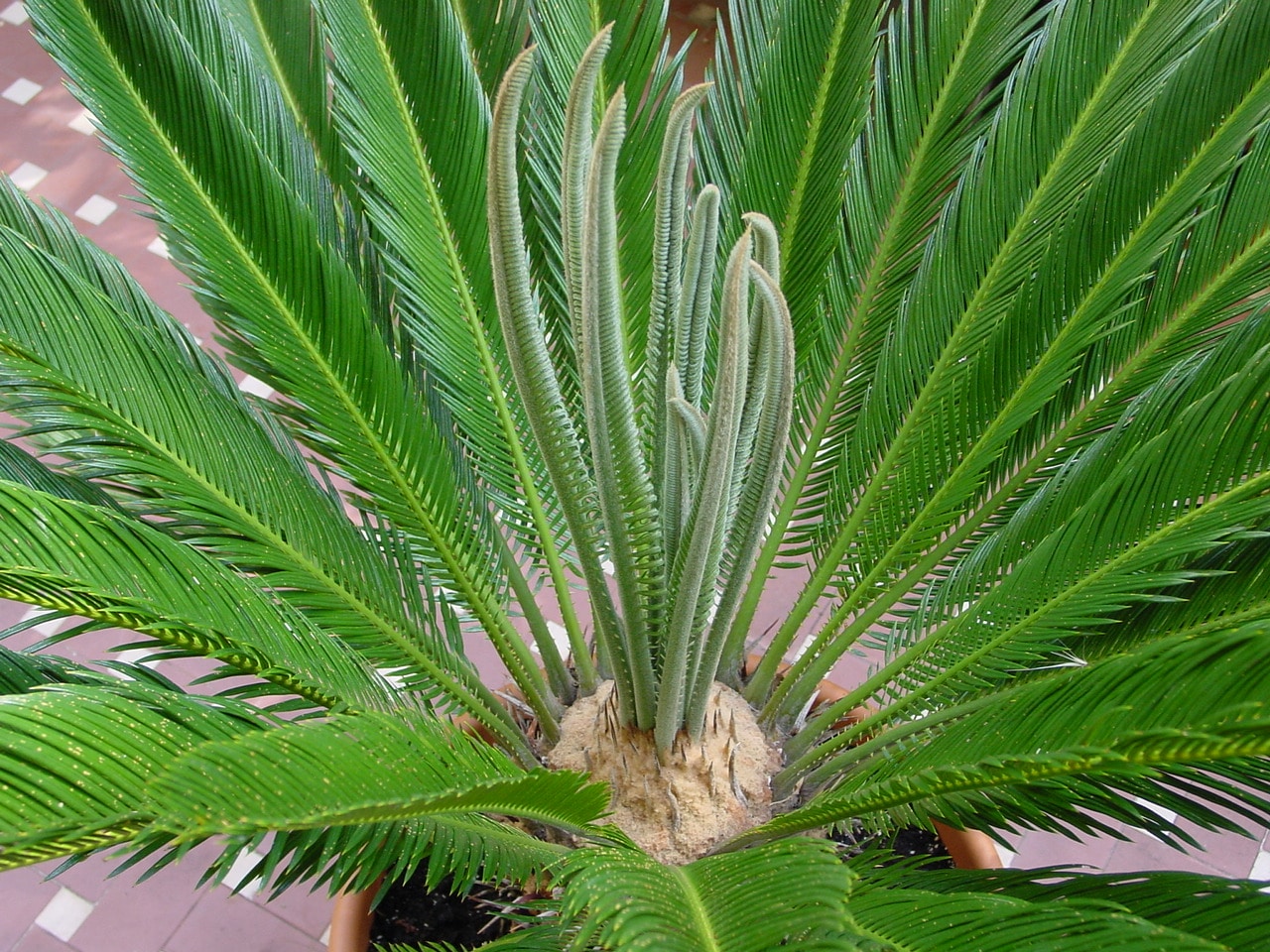
Cycas revoluta características y cuidados Jardineria On
Cycas revoluta (Sago Palm) Cycad, Japanese Sago Palm, Sago Palm, King Sago Palm, Cycas miquelii, Cycas sexseminifera What is Sago Palm? Cycad: Sago Palms (Cycas revoluta) are not actually palms but are instead cycads, which are a type of plant that predates even the dinosaurs.

Cycas Revoluta cuidados y características (Cica o Palma Sagú)
The Cycas revoluta (Sago Palm) prefers a dry growing environment, so you should use well-draining soil to keep your Cycas revoluta (Sago Palm) happy! Temperature for the Cycas revoluta (Sago Palm) The Cycas revoluta (Sago Palm) prefers a spot that consistently stays between 16 - 24°C (60 - 75°F).

Cycas Revoluta Foglie Gialle Sago Palm Cycas Revoluta Care and Growing Indoors
Descripción Esta planta muy simétrica sostiene una corona de hojas brillantes de color verde oscuro en un tronco grueso y peludo que normalmente mide unos 20 cm (7,9 pulgadas) de diámetro, a veces más anchos. El tronco es muy bajo a subterráneo en las plantas jóvenes, pero se alarga por encima del suelo con la edad.

Cycad (cycas revoluta) flower and fruit Stock Photo Alamy
Cycas revoluta Photo by: Forest Starr & Kim Starr. Habit at Hui Noeau Makawao, Maui, Hawaii (USA). May 30, 2012. Origin and Habitat: Endemic to Japan (Ryukyu and other islands off southern Kyushu,) and china Fujian (Lianjiang Xian, Ningde Xian, and some islands) Altitude: 100 and 500 m. Habitat: Grows mainly on the sea shore in thickets on.
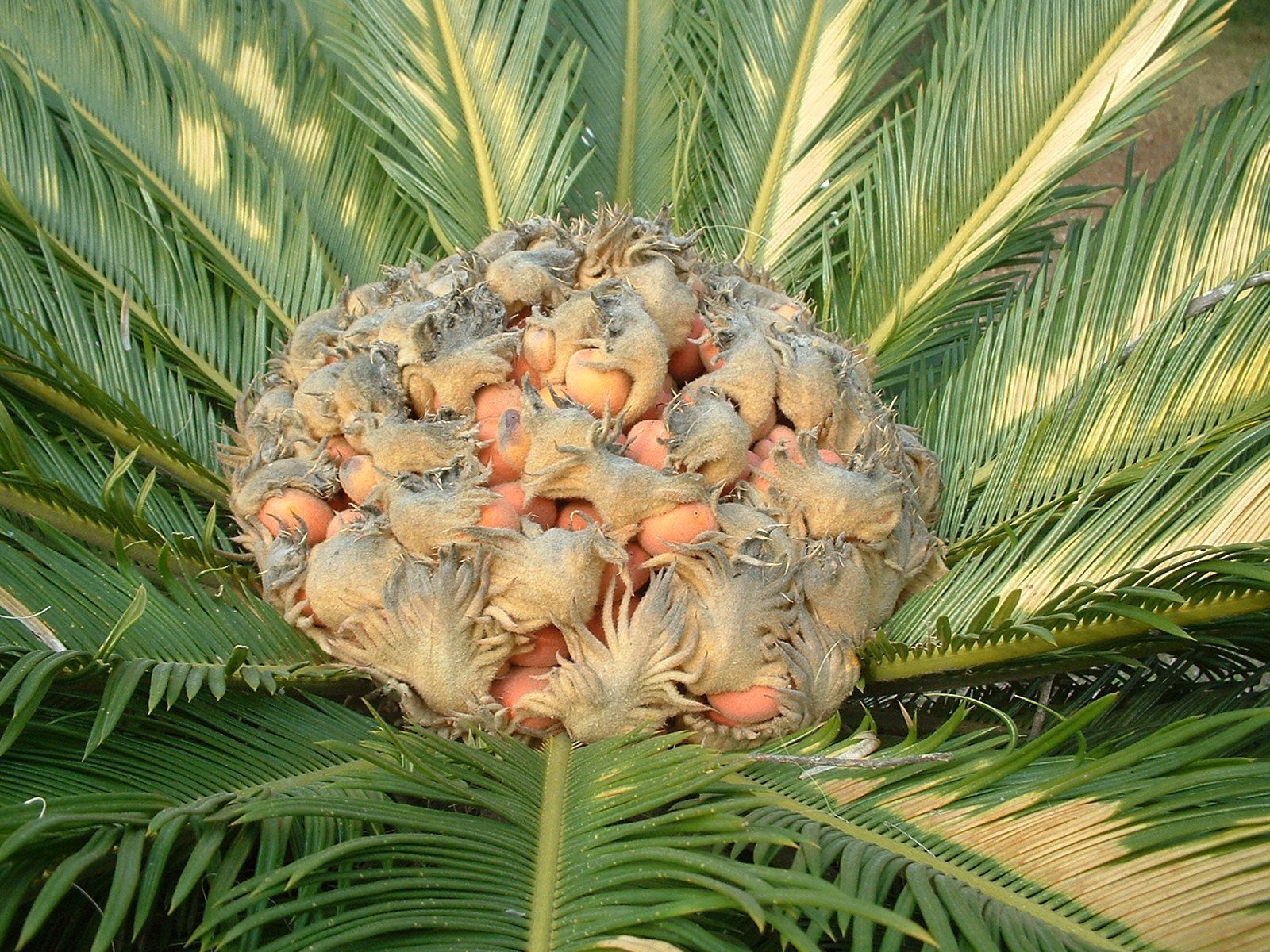
Cica Cycas revoluta Natureza Bela
Soil Preparation. Ensure the soil you intend to plant your Sago Palm tree in, is well-draining, and rich in organic matter. This is important to enhance your sago palm tree and start its growing journey the right way. The soil can be slightly acidic to neutral, the ideal pH levels range from 6-7.

Cycas revoluta How to grow & care
Description Sago palm is a tropical and sub-tropical showy evergreen member of an ancient plant family known as Cycadaceae, dating back 200 million years ago. The plant is native to the Japanese Island of Kyusha, the Ryukyu Islands, ad southern China. They are found in thickets along hillsides.
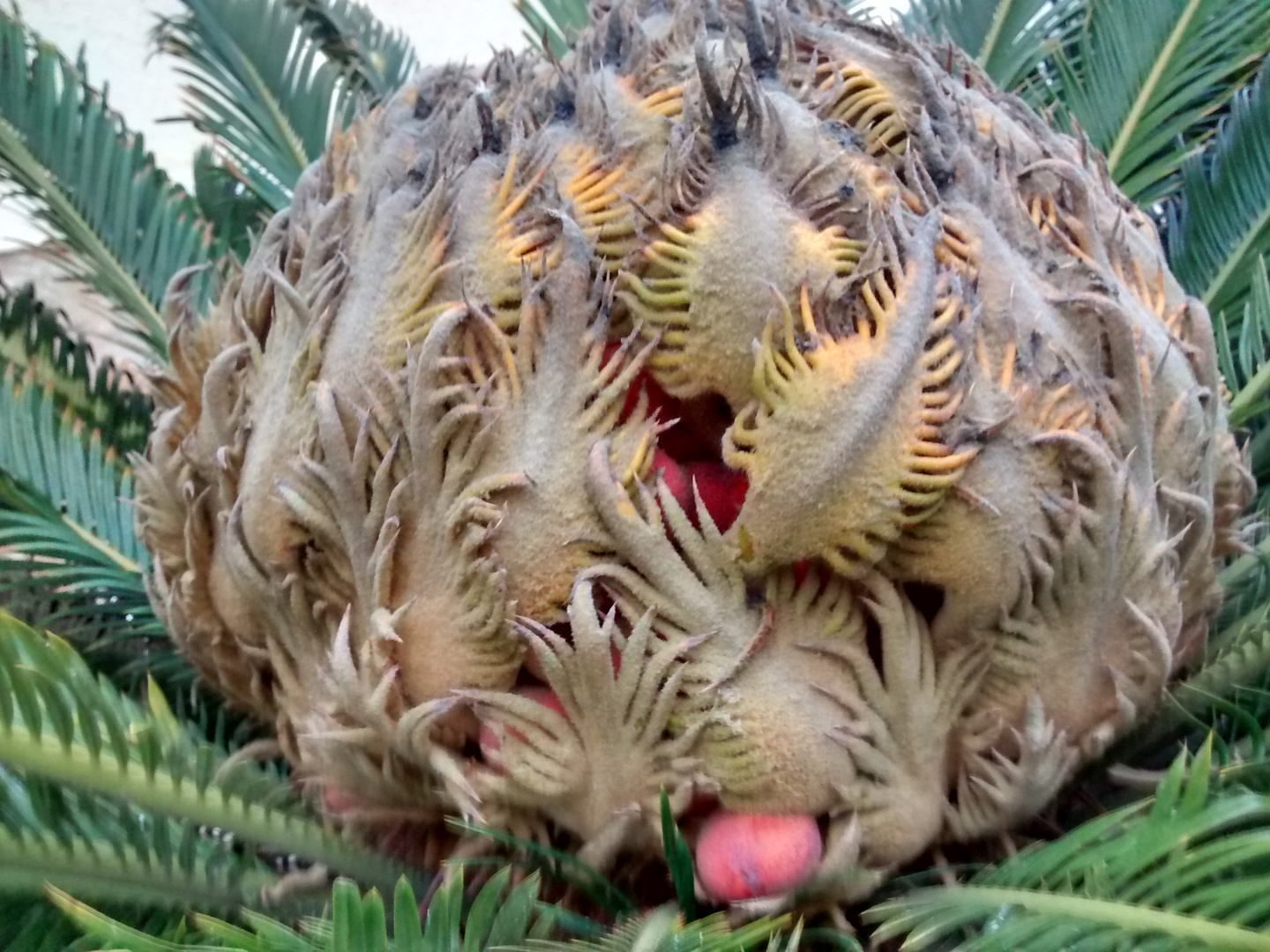
Fruto semilla de Cyca Revoluta , Sagu , falsa palmera , ojo Toxico ! Imagen & Foto frutos y
Cycas Revoluta has been used as a traditional medicine to cure blood vomiting, skin diseases, hypertension, gastrointestinal problems, cough, blood pressure, hair growth and snake bite. Sago Palm fronds are regularly used in the florist industry. Even the dried leaves of this plant are used as accents in floral arrangements.
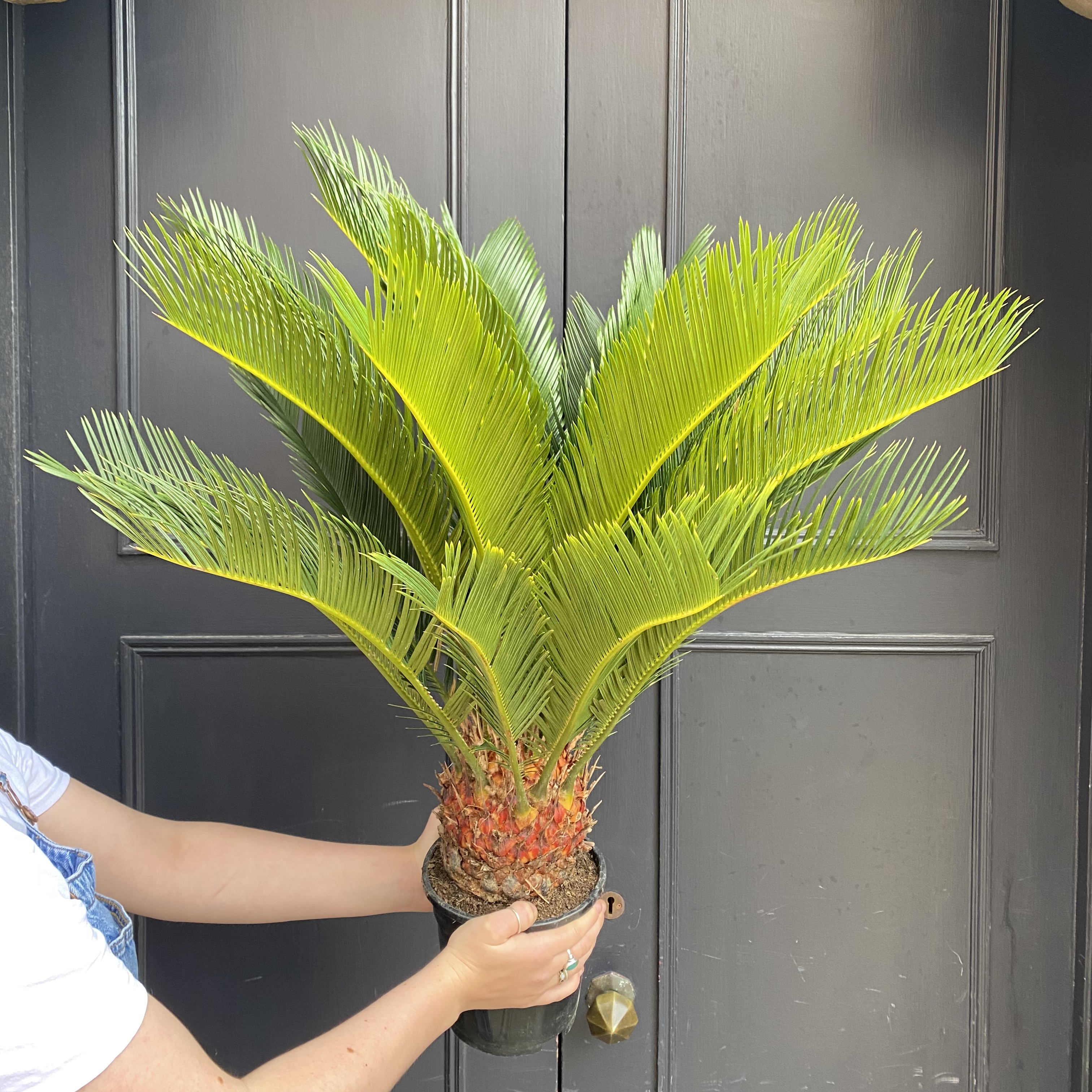
Cycas revoluta (17cm pot) grow urban.
Despite its common name, sago palm (Cycas revoluta) isn't technically a true palm tree though it may have the appearance of other types of palm.Though the sago palm is more related to a conifer, it grows best in warm, humid conditions, requires four to six hours daily of dappled sunlight, acidic soil, and consistent temperatures between 65 and 75 degrees Fahrenheit.
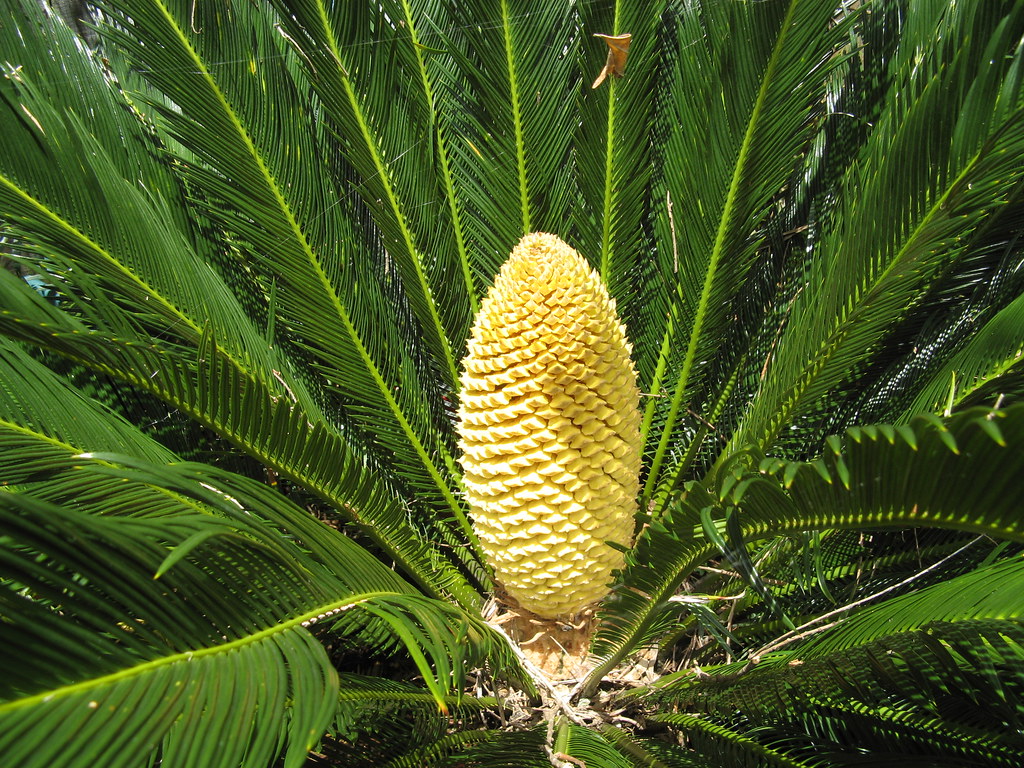
CYCA REVOLUTA PLANTHISPANIA S.L.
Cycas revoluta (Sotetsu [Japanese ソテツ], sago palm, king sago, sago cycad, Japanese sago palm) is a species of gymnosperm in the family Cycadaceae, native to southern Japan including the Ryukyu Islands. It is one of several species used for the production of sago, as well as an ornamental plant.The sago cycad can be distinguished by a thick coat of fibers on its trunk.

Cone Com Frutos Da Fêmea Cycas Revoluta Cycadaceae Sago Palm Imagem de Stock Imagem de
Sago palm grows well in full sun or partial shade but exhibits larger leaves in more shaded situations. Slow growing, the sago palm can reach heights of up to 15 feet in 50 years. Leaves are pinnately compound, 4 to 5 feet long, and up to 9 inches wide. The dark-green, stiff leaflets have a linear shape with a shiny upper surface.
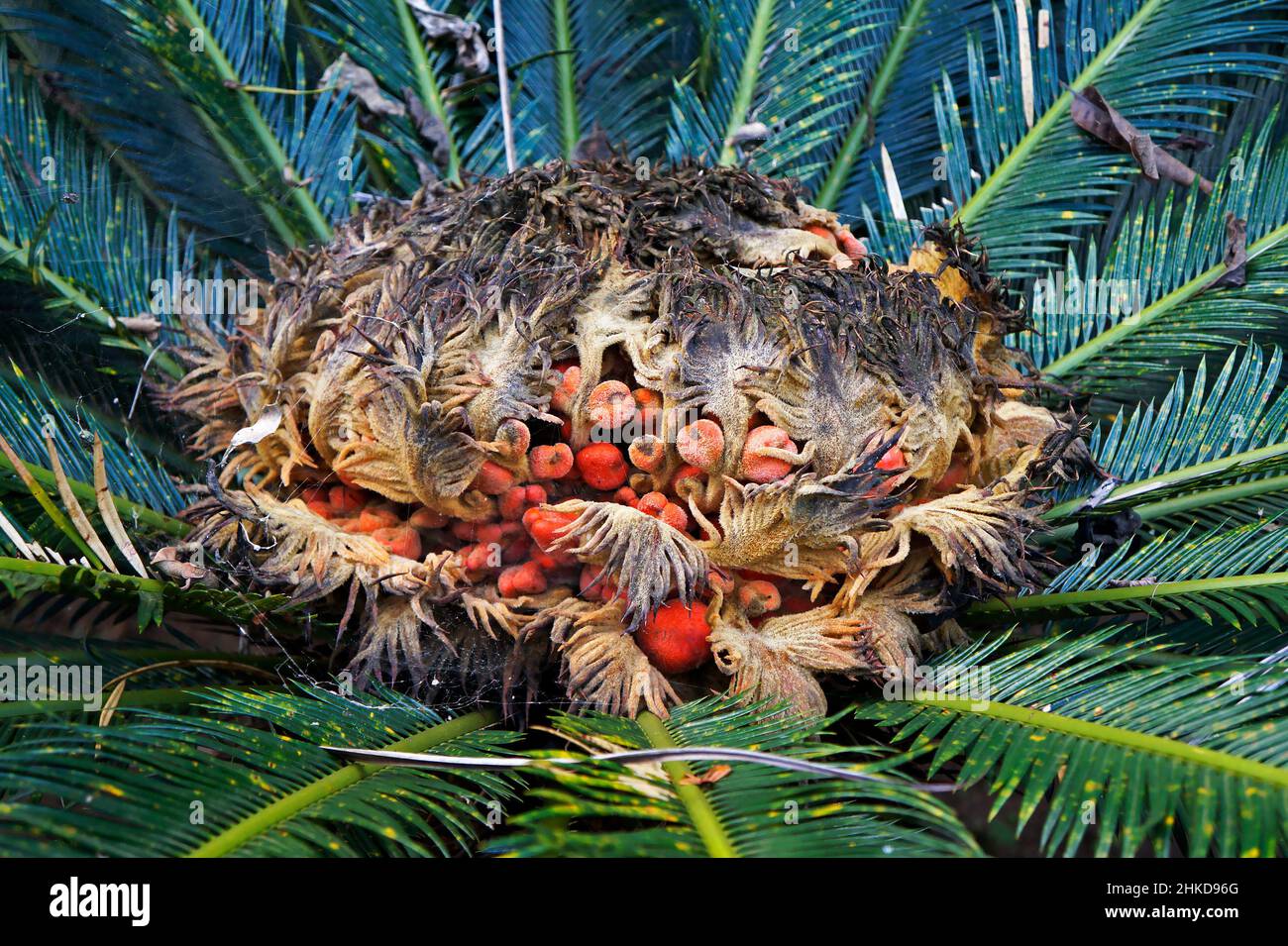
Sago palm fruits (Cycas revoluta Stock Photo Alamy
Cycas revoluta is an evergreen Tree growing to 3.5 m (11ft) by 3.5 m (11ft) at a slow rate. See above for USDA hardiness. It is hardy to UK zone 9 and is frost tender. It is in leaf all year, in flower from May to July, and the seeds ripen from October to November. The species is dioecious (individual flowers are either male or female, but only one sex is to be found on any one plant so both.

Cone Com Frutos Da Fêmea Cycas Revoluta Cycadaceae Sago Palm Imagem de Stock Imagem de espanha
This species in native to Kyushu (third largest Japanese island), the Ryukyu Islands and southern China. It is a very slow-growing, symmetrical plant that produces a crown of shiny, arching, palm-like, evergreen palmate leaves atop a shaggy upright trunk. Trunks take a long time to form (1" diameter trunks may take years to eventually reach 12.
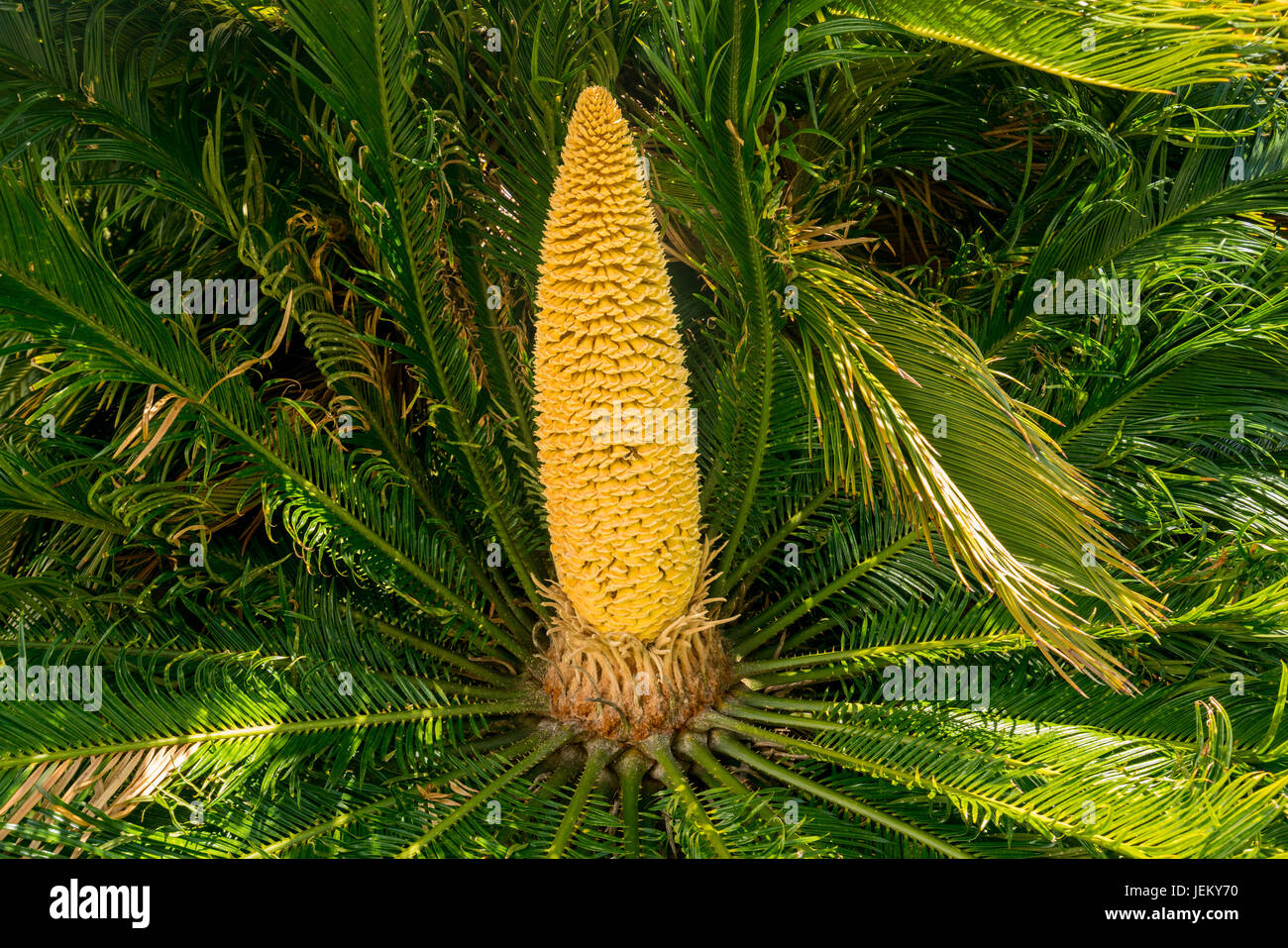
Detalle del fruto cónico Cycas revoluta Fotografía de stock Alamy
While various species of cycads can be found throughout the world, the subtropical C. revoluta is native to Japan. An unusual and popular ornamental, Cycas revoluta is one of the most primitive living seed plants alive and has changed little over the last 200 million years. A rugged trunk topped with whorled feathery leaves resulted in the common name "Sago Palm".

Cono Con Frutos De Cicas Revoluta Cicadáceas Sago Palmera Imagen de archivo Imagen de cubo
This review article on Cycas revoluta mainly comprehensively summarizes characterization, morphology, distribution, traditional uses, phytochemical constituents and biological activities of isolated individual constituents as well as plant extract. Cycas revoluta is commonly known as Sago palm which belongs to gymnosperm species, cycadaceae family and has been used as a traditional medicine to.